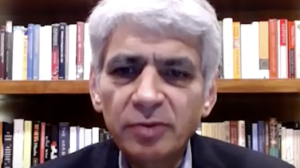In a study designed to investigate the biological relevance of PARP1 in multiple myeloma (MM), data revealed a significant correlation between increased PARP1 mRNA expression and poor prognosis of patients with MM. Gene Set Enrichment Analysis suggested that high MYC expression was correlated with sensitivity to PARP inhibitors in patients with multiple myeloma. Overall, these findings suggest that MYC-driven multiple myeloma cells are addicted to PARP1 alternative non-homologous end-joining repair, representing a druggable target for patients with this incurable disease.
Caracciolo D, Scionti F, Juli G, et al. Exploiting MYC-induced PARPness to target genomic instability in multiple myeloma. Haematologica. 2021;106(1):185-195.




